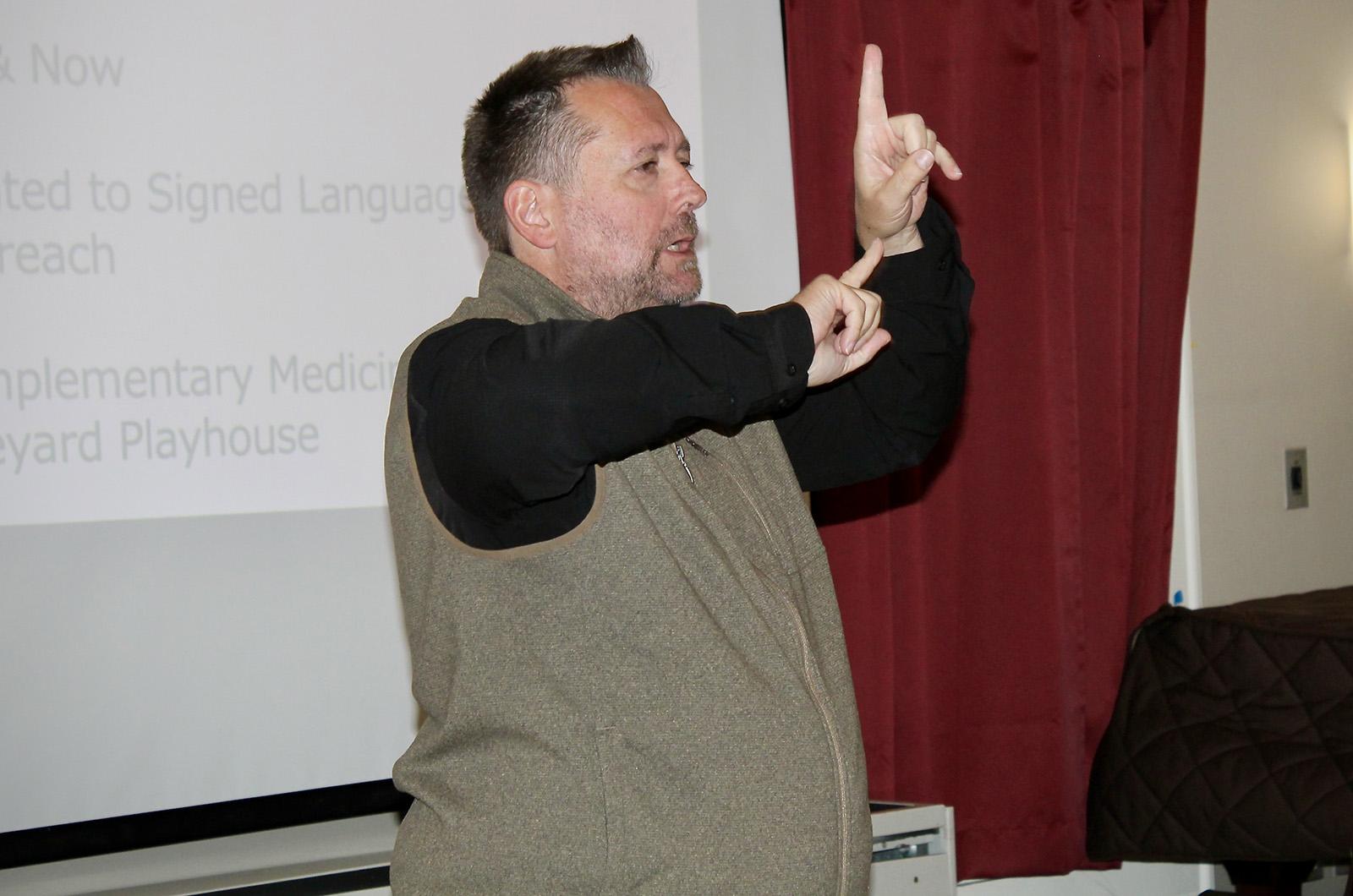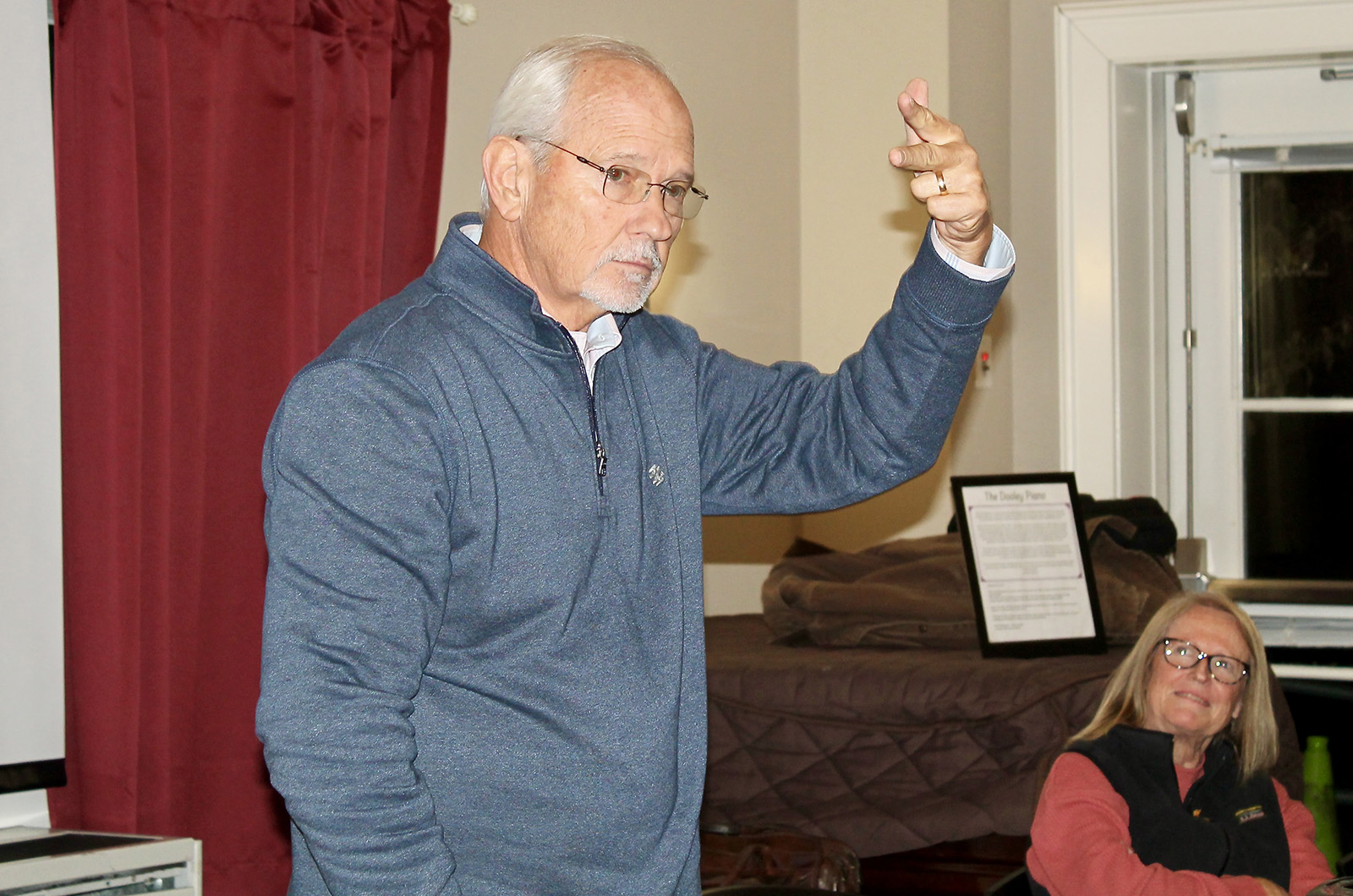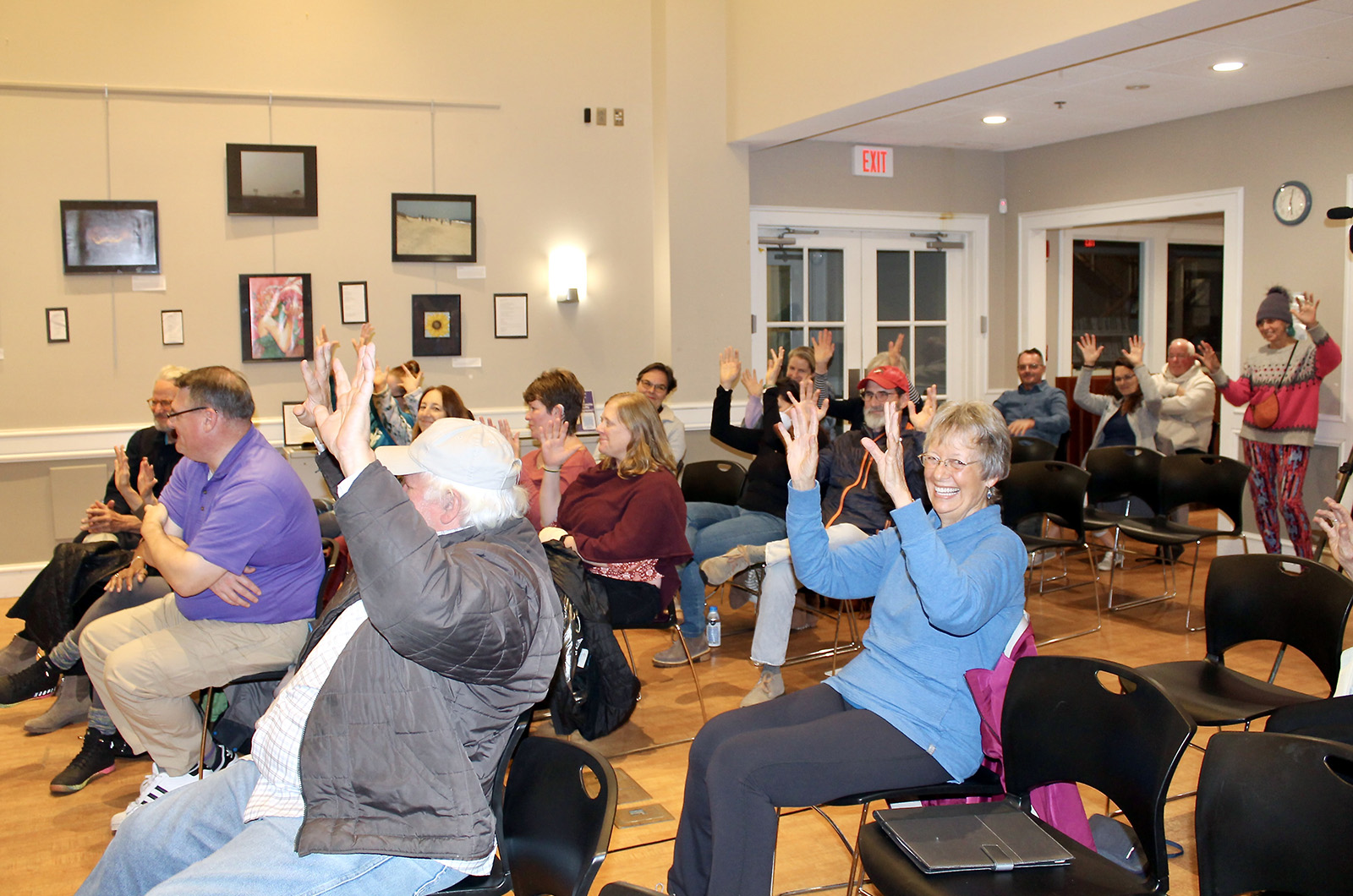At a presentation on the history and evolution of sign language last week, Alton Brant, PhD, stood at the front of the Oak Bluffs Library conference room tapping his fingers together lightly. This is the motion for “more” in American Sign Language (ASL), he explained to his audience. When he was a baby, it was how he let his parents know he wanted a second helping of dinner.
Mr. Brant is a CODA, or a child of deaf adults, and until he was three years old, he communicated using only ASL.
“My parents raised me in a deaf community,” he said. “I didn’t socialize with hearing people... and then I got to first grade and realized that I was different. I thought everybody had deaf people in their family.”
Mr. Brant was one of four researchers and educators who traveled to the Vineyard to take part in the event on Nov. 8, organized by MV Signs: Then and Now, a project founded in 2016 by Islander Lynn Thorp to teach and revive ASL — a language prominent on the Vineyard between the 17th and late 19th centuries.
Addressing an audience of people both hearing and non-hearing, the researchers described their studies and experiences in the deaf community. The presentations were translated by John Chambers and Melissa Harris.
Melanie McKay-Cody, Phd, an assistant professor of disability and psychoeducation at the University of Arizona, studies endangered North American Indian Sign Language. As a deaf affiliate of the Cherokee, Shawnee, Powhatan and Montauk tribes, she said that the subject hits especially close to home.
“ASL wasn’t the first sign language in America,” she said. “I study Indian Sign Language, which started out probably between 2,000 and 6,000 BC.”
She projected a photo onto the conference room screen of ancient pictographs found in El Paso, Tex., demonstrating how the pictographs depect signs: “This one here looks like a snake. The snake actually represents a river or a creek that is gentle with soft water.”
Canada has its own history and versions of sign language, too, added Jody Cripps, PhD, a deaf ASL professor at Clemson University in South Carolina. Deaf Canadians communicate using ASL, Langue des Signes Québécoise, Maritime Sign Language and Inuit Sign Language.
“ASL has had a lot of influence from other indigenous signing,” he said. “But ASL, as it is today, tends to be what most people think of when they think of signing in America.”
Doreen Simmons, a deaf and now-retired ASL researcher from the University of Connecticut, agreed, and said that she continues to learn from her peers and fellow educators about the history of North American signing.
“I didn’t feel right about doing research on Indian Sign Language because, well, I’m not Indian and I was not born into the culture,” she said. “But that’s what Melanie does, and so we can work together.”
Alton Brant earned his doctorate degree in education development from the University of South Caroline and created the ASL program at Clemson University. Using ASL and being a part of a deaf family is a privilege, he said, he almost wasn’t afforded. His grandfather protested the marriage of his mother and father out of fear that their children would be deaf, too.
“My father told him, ‘We’re getting married anyways,’” said Mr. Brant. “My grandfather didn’t even show up to [the wedding].”
Mr. Brant can hear, but the deaf community and ASL remain a defining part of his identity.
“This here tonight is really just a celebration of both deaf and hearing people together, and the continuation of American Sign Language,” he said.









Comments (1)
Comments
Comment policy »